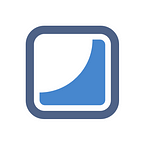Our toolkit for the Customer Success Manager
According to the adage, “a good workman looks after his tools”. Having the best Customer Success Managers is no excuse for not investing in the right tools. On the contrary, if you want your top of the league CSMs to thrive and do their best, you must give them the tools they need — the key to optimized processes.
Of course, there are a myriad of different tools out there. If you don’t know what to choose, we’ve compiled a list of tools that Customer Success Managers use (and love) for each aspect of their responsibilities and daily activities:
1. Schedule meetings
Have you ever tried scheduling all your calls, product demos, trainings, and Quarterly Business Reviews manually?
It can become quite a conundrum to organize your schedule based on your users’ availability. Why don’t you automate your most recurring tasks by using Calendly? It allows your users to directly book a time slot in your agenda based on your available slots.
2. Emailing and follow up
Having a tool to automate email follow-ups is compulsory if you want to optimize your emailing process and stop spending time thinking about it. With tools like Vocus.io or Yesware (that integrate into Gmail), you can design your email process and send automatic follow-ups when your users don’t reply. It helps you have more time building your strategy and save time executing it.
3. Product tour
Although product tours are usually handled by the product owner, the Customer Success Manager may want to update it in order to improve and automate the customer experience. Having an adequate tool enables the CSM to handle the onboarding phase and craft a perfect product tour without the help of developers. Three of our favorites are Appcues, Helppier, and Kameleoon.
4. Help center and Academy
If you want to provide all the help your users may need even before they ask for it, you can’t just rely on one-to-one interactions, you need to provide self-service information. You can start by building a comprehensive help center or knowledge base and keeping it up to date. Tools like Zendesk and Intercom are perfect for the job.
You can also create Academies with tools like AcademyOcean and Airteach, to provide them with a superior educational experience and to facilitate their onboarding. It will help them get inspired and discover what they can do with your product in order to achieve their “desired outcome”.
5. Webinar tool
An alternative to a recorded academy video is the webinar: an online seminar during which one person presents and the others can ask questions in real time.
The webinar is a great way to create some sort of emulation when releasing a new feature. Plus, you can touch far more people at the same time than if you call all your users one by one to teach them how to use this new feature and make the most of it.
Once again, using the right tool can make the difference: we like to use Livestorm, but you can also use Zoom or GoToWebinar.
6. NPS & Feedback tools
As a Customer Success Manager, you need to know how well your customers are doing with your product. To do so, you can ask for feedback (anonymous or contextualized), but it’s not really scalable.
One of the top metrics all CSMs like to follow is the NPS, the Net Promoter Score. It measures the percentage of customers who are willing to recommend your product. It is usually measured through a survey, asking your users: “On a scale from 0 to 10, how likely are you to recommend [our product] to a friend or coworker?”
- Your Promoters (score 9–10) are loyal enthusiasts who will keep buying and referring your product to others, fueling your growth.
- Your Passive users (score 7–8) are satisfied but unenthusiastic customers, they can be vulnerable to competitive offerings.
- Your Detractors (score 0–6) are unhappy customers who can damage your brand.
Your Net Promoter Score is your percentage of Promoters minus your percentage of Detractors.
Among all the tools out there to measure your NPS, here’s our short-list: SatisMeter, Delighted, Promoter.io, and Wootric.
If the NPS doesn’t fit you, you can also use a CSAT (Customer Satisfaction) or CES (Customer Effort Score). And once you have a score, you can ask your clients for details by sending them a Typeform questionnaire.
7. Bug escalation
Feedback isn’t always positive. If a customer is having some issues with your product or identifies a bug, you need to share it with the rest of the team and to follow up with its resolution. Indeed, if you want to earn your customer’s trust, you need to stand on his•her side and to offer a quick solution in case of an issue.
Trello and Jira are both great tools for bug escalation and follow up. They let CSMs have a look at how bugs and clients tickets evolve, and be able to inform their customers. In other words, having a bug escalation tool help them fulfill their mission of transparency.
8. Customer Success Platform
Finally, we couldn’t publish this article without talking about Customer Success Platforms. Sales representatives have the CRM, CSMs need their specific tool as well. Indeed most of the day, Customer Success Managers juggle with emails, reminders, analytics, playbooks… It can become a true headache if you don’t have the right tool to help you organize and automate as much as possible.
That’s what Customer Success Platforms are: a single interface to manage all your tasks, providing a unified view of your clients (information, usage, past interactions, …) without having to switch between tools.
We can’t help but recommend Salesmachine ;)
